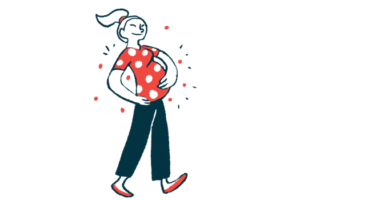Genetic test with IVF may help vEDS women have children: Report
Case report describes woman who used PGD to have two children via surrogacy

A pre-implantation genetic diagnosis (PGD), used for identifying genetic abnormalities in embryos during in vitro fertilization (IVF), may help women with vascular Ehlers-Danlos syndrome (vEDS) who want children, a recent case report shows.
A woman with vEDS successfully used PGD to have two biological children via surrogacy. Neither were affected by the genetic condition.
Researchers say the case — the only documented use of PGD in a vEDS patient — highlights the lack of resources for providing options to women with vEDS who might want biological children.
“It is important to ensure that all women with vEDS who wish for biological children are counseled, informed of up-to-date risks, and have a clear understanding regarding the advantages and disadvantages of all available options,” the researchers wrote in “Case report and discussion: Pre-implantation genetic diagnosis with surrogacy in vascular Ehlers–Danlos syndrome,” which was published in Frontiers in Genetics.
Typically caused by mutations in the COL3A1 gene, vEDS is a serious type of Ehlers-Danlos syndrome wherein fragile blood vessels can lead to internal bleeds and organ involvement.
Due to its serious consequences, women with vEDS are at an elevated risk of complications during pregnancy and guidelines indicate pregnancy should be avoided. Because vEDS is a genetic condition, a woman with the disease could pass it on to her children.
Nonetheless, “many women with vEDS remain keen to have their own biological children,” the researchers said.
There are various reproductive assistive technologies to enable them to do so. PGD with or without surrogacy is one such option.
With this approach, a women has IVF, wherein an egg is removed from her ovaries and fertilized with sperm in the lab. The embryo is then implanted back into her uterus or a surrogate’s, who will carry the baby to term.
Before it’s implanted, PGD tests it for a disease-causing mutation. This helps to make sure the baby won’t inherit the mother’s disease.
One case with PGD; more studies needed
There is only one documented case of a woman with vEDS who used PGD with surrogacy to have children, the scientists noted. Though previously reported, the researchers updated her case.
The woman, who had been diagnosed with vEDS via genetic testing at age 28, began standard IVF protocols at age 32, wherein hormone injections stimulate ovulation for egg collection. During the first round of IVF, she had vEDS complications and advised to avoid further hormone doses.
At 33, the woman began natural IVF, which uses a woman’s natural ovulation cycle, not hormones, for egg retrieval. The eggs were successfully retrieved, but weren’t implanted in the surrogate successfully.
After several rounds of successful egg retrievals but unsuccessful implantations, the woman using natural IVF at age 35 with a different surrogate. Ultimately, a baby boy was born without a mutation in COL3A1.
She then underwent 20 more IVF cycles, during which she had a number of vEDS-related complications. At age 41, another implantation was successful and a daughter unaffected by vEDS was born.
“Assisted conception and surrogacy could be considered a reproductive option for women with vEDS,” the researchers wrote, adding that while egg retrieval appears generally safe, natural, rather than hormonal egg stimulation, should be considered with cardiovascular complications.
Additional controlled studies to evaluate the safety of PGD in these patients, “are essential to equitable healthcare provision and patient counseling,” the researchers said, noting while the woman in this case used a surrogate to avoid complications, ” … many female patients with vEDS continue to have pregnancies.
All women with vEDS should talk to their doctors about the best options in their own case, including whether to consider PGD with or without surrogacy, despite the risks, the researchers said.
“Lack of communication regarding reproductive options and safety may put this group of patients at further risk as their ability to make an informed decision around reproduction is reduced and may, at worst, result in an unmonitored pregnancy,” they wrote.







